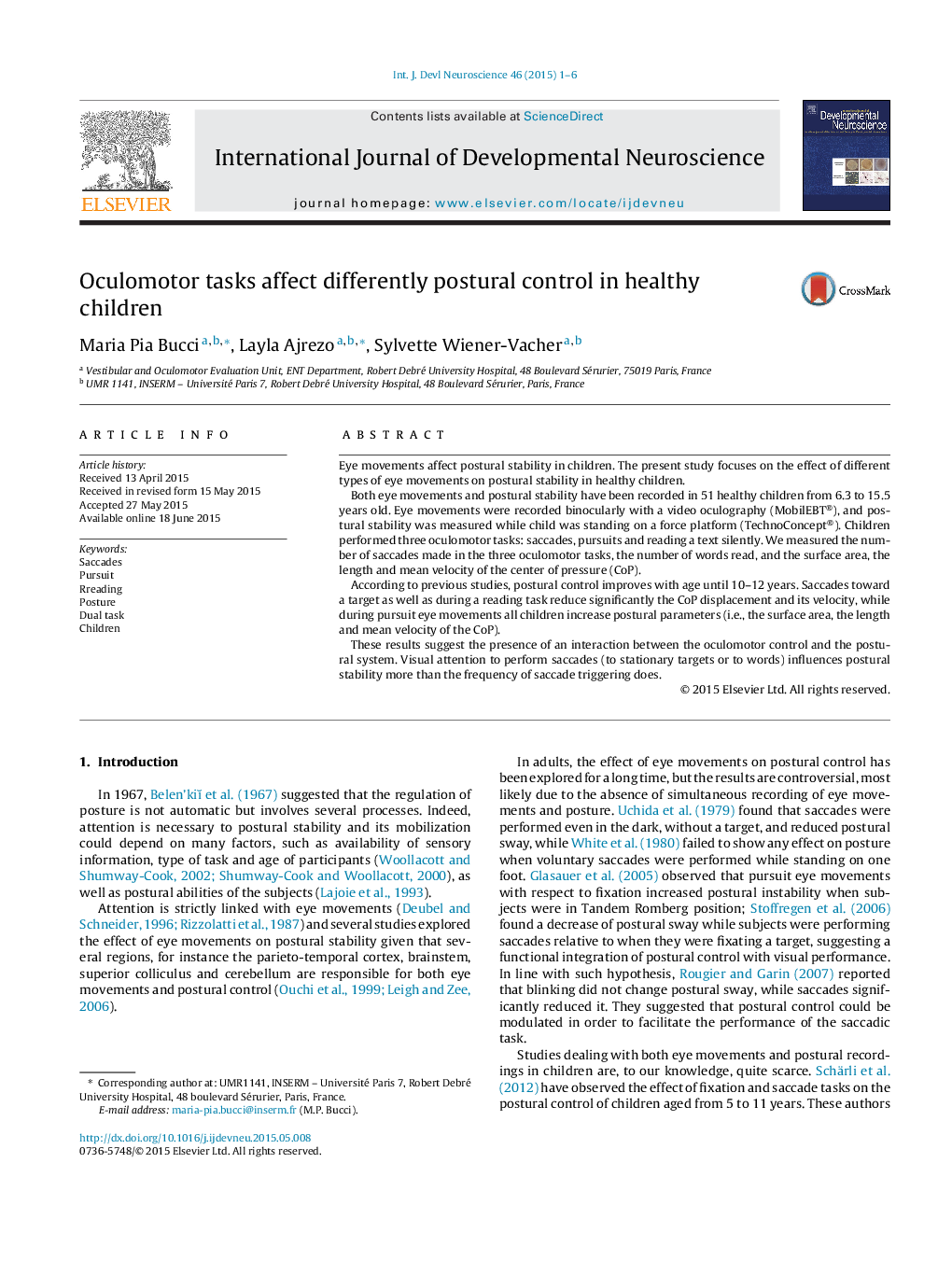| Article ID | Journal | Published Year | Pages | File Type |
|---|---|---|---|---|
| 2785684 | International Journal of Developmental Neuroscience | 2015 | 6 Pages |
•Both eye movement performance and postural capability improve with age.•There is an interaction between the oculomotor control and the postural system.•Visual attention to perform saccades (stationary targets or words) influences postural stability more than frequency of saccade triggering does.
Eye movements affect postural stability in children. The present study focuses on the effect of different types of eye movements on postural stability in healthy children.Both eye movements and postural stability have been recorded in 51 healthy children from 6.3 to 15.5 years old. Eye movements were recorded binocularly with a video oculography (MobilEBT®), and postural stability was measured while child was standing on a force platform (TechnoConcept®). Children performed three oculomotor tasks: saccades, pursuits and reading a text silently. We measured the number of saccades made in the three oculomotor tasks, the number of words read, and the surface area, the length and mean velocity of the center of pressure (CoP).According to previous studies, postural control improves with age until 10–12 years. Saccades toward a target as well as during a reading task reduce significantly the CoP displacement and its velocity, while during pursuit eye movements all children increase postural parameters (i.e., the surface area, the length and mean velocity of the CoP).These results suggest the presence of an interaction between the oculomotor control and the postural system. Visual attention to perform saccades (to stationary targets or to words) influences postural stability more than the frequency of saccade triggering does.
